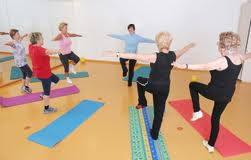 One of every three adults over age 65 will have a fall this year. This rate increases to one half of adults over age 80 who will fall during the year, some of them multiple times. On top of this, half of all falls occur in an older adult’s home. With these alarming rates, it may come as no real surprise to those of you who may be caregivers to an older loved one that falls affect more older adults than heart attacks and strokes combined.
One of every three adults over age 65 will have a fall this year. This rate increases to one half of adults over age 80 who will fall during the year, some of them multiple times. On top of this, half of all falls occur in an older adult’s home. With these alarming rates, it may come as no real surprise to those of you who may be caregivers to an older loved one that falls affect more older adults than heart attacks and strokes combined.
As a geriatric care manager, I commonly get the call from a caregiver to an older loved one who has had one of these falls. And the fall often has resulted in serious injury, most often a fractured hip. One thing caregivers may not know is that unintentional falls result in death of the older adult in nearly 22,000 cases each year. We are not talking about just a bump or a bruise, and even more sobering is the simple fact that most falls are preventable. And, if not preventable, early intervention can make a huge difference in your older loved one’s safe recovery from the fall. Here are some tips you can employ to help your older loved one be safer from falls:
- Exercise. Yes, it is that simple. I have talked in other postings about “use it or lose it.” It is not news that older adults tend to lose muscle mass as they age, and with this loss there is a proportional diminution of strength and endurance. There also is a loss in balance and coordination. Encourage your older loved one to take part in an organized exercise plan, perhaps with a fitness instructor who can teach safe exercise to improve balance. Research has shown that this can reduce fall risk by as much as 20% to 50%. And yoga or TaiChi can be a wonderful way to improve balance by strengthening and enhancing muscle coordination.
- Home Safety. Do a search of my Blog for other postings devoted to “home safety” and you will see a lot more detail than I will give here. But safety at home starts with clearing floor surfaces of scatter rugs, worn carpets or electrical cords in trafficked areas. Go through your older loved one’s home at night and look for dark or shadowy areas that may be fall risks. And be sure that a light is within easy reach of your loved one’s bed so that getting up at night in the dark does not result in a fall. And be sure to have sturdy handrails in stairways as well as long hallways. Bathroom grip bars are also important as most falls in the home happen in that porcelain minefield we call the bath.
- All of the Above. The most successful fall prevention efforts incorporate steps toward a safer home environment along with a more fit older loved one. To these I would also add a healthy diet high in protein and complex carbohydrates to help fuel the musculature that will prevent a fall. Although the evidence is not entirely clear yet, there is good reason to believe that vitamin D supplements also can be important as they help to maintain bone density and strength as well.
Not sure how to implement these steps? If you are a caregiver to an older loved one, speak with their provider about appropriate exercise or a nutritionist about their diet. And reach out to a geriatric care manager about a home safety inspection. You may find that your older loved one may be much more willing to listen to an expert outside the family that to their son or daughter. We are here to help.
Charlotte Bishop is a Geriatric Care Manager and founder of Creative Care Management, certified professionals who are geriatric advocates, resources, counselors and friends to older adults and their families in metropolitan Chicago. Please email your questions to info@cr eativecaremanagement.com.




